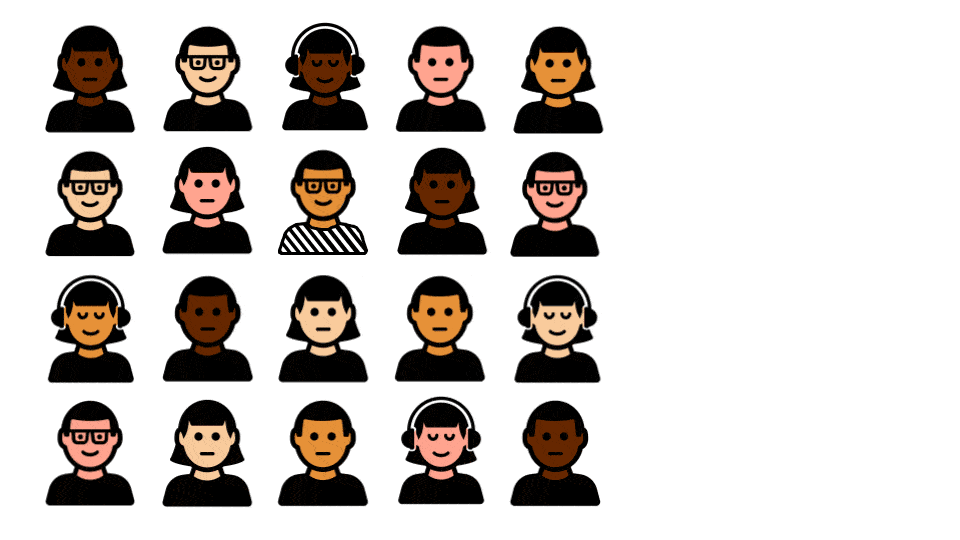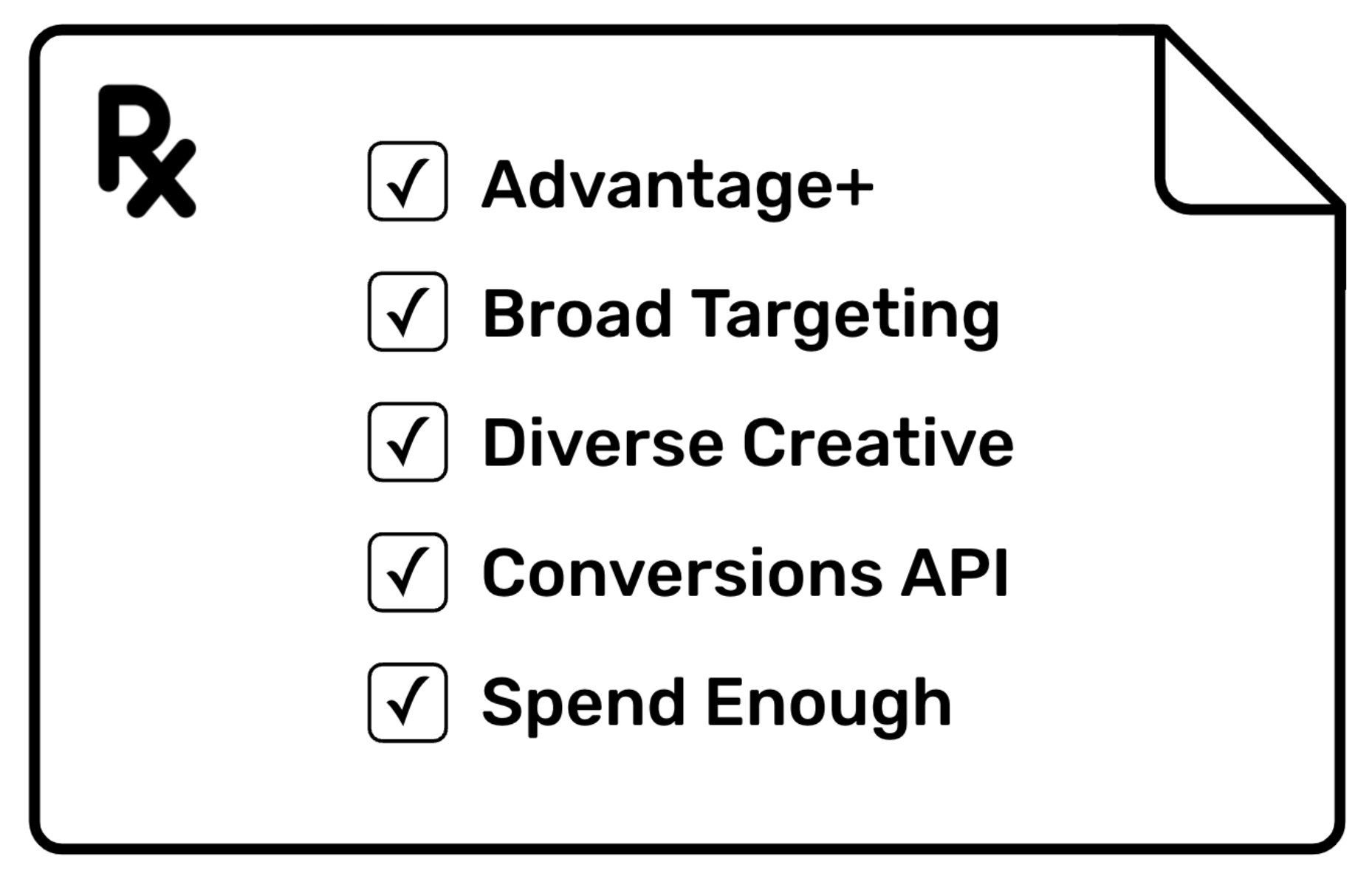Introduction
In the realm of design, biomimicry often guides us to discover the genius of biological systems and use their secrets to inspire our own remarkable inventions. But what about the genius of artificial intelligence systems? Exploring the concept of “machine mimicry”, this post explains how Facebook’s machine learning systems work, as well as offer lessons on how to best leverage creative, targeting, and data to unlock the full potential of Facebook ad algorithms.
The Illusion of Simplicity: Unpacking the Facebook Algorithm
At first glance, we might liken Facebook's ad targeting and optimization algorithms to a matchmaking system, aligning ads with the right audiences based on their interests and behaviors. While it's common to assume that machines think the way humans do, this isn't the case. Algorithms can look across countless dimensions, easily and near instantaneously. To understand how these systems function at scale, let's build a solid foundation.
A Simple Metaphor for Look-a-like Modeling: Fenway Park and The Hotdog Vendor
Most ad buyers are familiar with the term look-a-like because these audiences are built right into Facebook’s targeting capabilities. But how does creating and using a look-a-like really work?
 Simple one-dimensional example of look-a-like modeling. Character drawings by Adrien Coquet from The Noun Project
Simple one-dimensional example of look-a-like modeling. Character drawings by Adrien Coquet from The Noun Project
Imagine you're at Fenway Park, watching a baseball game. You see a hotdog vendor walking up and down the aisle, shouting "Hot dogs. Get yourself a Fenway Frank for five dollars." The vendor climbs up and down the rows of stadium stairs, hoping to find hungry people wanting to buy. It's exhausting work, inefficiently simple, and merely favors those closest to the aisle with ready cash.
Say I buy a hotdog and I happen to be wearing a striped shirt and sunglasses. If the vendor was like the Facebook algorithm, they'd save time by seeking out similar-looking people in striped shirts and sunglasses—my look-a-likes. Pinpointing and targeting look-a-likes would be a much more efficient way to navigate through the whole stadium of prospective customers and would probably sell more hotdogs, while exerting less effort.
However, let's consider that these systems aren’t just finding matches based on literal attributes like the same shirt, same interest, same location. Instead, they are uncovering patterns within datasets composed of trillions of parameters.
Expanding the system: Pattern matching across 1000x dimensions
This stadium metaphor is helpful, but Facebook's algorithm operates on an incomprehensibly more complex scale. Machines are genius-level pattern matchers, and Facebook specifically has up to 15 years worth of data on more than 3 billion people. It tracks each device, each ad impression, how many seconds until you scroll, what you clicked, who you follow, who they follow, what each individual engaged with. This domain of data intelligence spans both the content feed of all Meta apps and almost the entire internet, thanks to Facebook's expansive code installation of the Like button and its website pixel.
.gif?width=648&height=314&name=ezgif.com-optimize%20(1).gif) Visualization of Machine Learning data clustering, by Daniel Smilkov and the Big Picture group
Visualization of Machine Learning data clustering, by Daniel Smilkov and the Big Picture group
Facebook’s algorithms evaluate pattern matching across countless dimensions and find clusters of common people, who share common preferences for content, and who exhibit common behaviors on websites. If you feed this powerful system the right inputs, it unlocks a super-human capability to learn who your best customers are and use that model to find the people who are most likely to buy from you. This results in superior ad targeting, more qualified traffic to your site, and a significant increase in site purchases.
This process typically takes 50 sample purchase conversions to learn enough to get up and running, and works phenomenally well when it has 1000 or more samples of your customers to train the model off of. How can you take full advantage of this? Let’s find out.
A Shift in Strategy: Embracing the Algorithm
Now that we can begin to appreciate all that these algorithms are processing, let’s consider a few shifts in strategy to take advantage of what we know.
a) Creative Diversity: The creative component of your campaign isn't just about aesthetically pleasing visuals or catchy ad copy. Given the algorithm's ability to evaluate across numerous dimensions, the true power of your creative lies in its diversity and the different emotional territories it explores. Your ad should not only capture attention in the feed but also spark interest that drives clicks. Emotion is what drives action, so you want to avoid testing blue button versus red button and instead explore different psychological motivations that drive action. Varying your content in alignment with this concept can create potent fuel for the algorithm.
b) Expansive Audiences: The key to successful targeting isn't merely zooming in on individuals with specific interests. Rather, it's about embracing the full spectrum of your potential audience and giving the algorithm room to run and explore, at scale. Broad targeting empowers the algorithm to identify a wider range of attributes to match on, as well as work with a wider range of potential matches. If you give the system a huge, diverse audience, as well as a lot of training data, it will work quickly and efficiently to deliver very effective ad results.
c) Real-time Data Feedback: Providing a robust data feedback loop is critical. It enables the algorithm to differentiate high-value purchasers from low-value site visitors, boosting the efficiency of your campaign. And while Facebook knows exactly what is happening within the newsfeed, you need to build a powerful data connection to illuminate what is happening on your website after people click an ad. This is the precise role of Popsixle - our goal is to create the best possible data connection so that your Facebook account knows exactly what is happening on your site, without being held back by data gaps or “light” data payloads that can’t be matched back to Facebook users.
d.) Be Patient: Once you give these systems the volume of data needed to build a confident learning model, you don’t want to change anything. Changing your budget more than 20% per day, changing your ad targeting, changing your creative, changing the page you link to - these are all seemingly innocent “optimizations” that can and will knock your campaign out of learning. Simply set up the campaign for success, and then let it run. You must be patient and trust that Facebook’s system is smarter than any human, no matter what your 3rd party attribution platform tells you.
Practical Application: 5 Steps to Machine Learning Success
Shifting your ad development process to fully harness the power of Facebook's Machine Learning can have a profound impact on performance. To kickstart your journey and unlock immediate results, here are five next steps to take.
- Embrace Advantage+: Advantage+ unifies several Facebook ad products that utilize machine learning and auto-optimization, including auto-placements, automatic creative optimization, and the use of Facebook/Instagram Shopping.
- Employ Broad Targeting: To fully capitalize on machine learning, target large, diverse audiences, ideally ranging from 10M-100M. You can refine your audience further by incorporating parameters such as age, gender, or interests.
- Develop Diverse Creative Concepts: Use brainstorming, partner with creative strategists, or conduct customer feedback to uncover your customers’ motivations. Then create diversified content that taps into these emotional drivers.
- Establish an Advanced CAPI Connection: It's crucial for Facebook to receive data from your site, distinguishing purchasers from mere visitors. An Advanced Conversions API (CAPI) connection, like Popsixle, provides Facebook with enriched data to facilitate matching site visitors to Facebook users.
- Spend Wisely to Achieve Minimum Scale: Your ad budgets should allow for at least 50 conversion events per week for Facebook's machine learning model to effectively learn and optimize. If you're unsure about the ideal budget, refer to our recent post discussing this topic and providing sample calculations.

Work the Algorithm, Win on Facebook
Machine Learning outperforms people in pattern matching by a wide margin. These algorithms evaluate data across countless dimensions, including content, context, dwell time, social connections, engagement, and conversion data. By providing a wide variety of content, large audiences, a strong real-time data feedback loop, and the time and space needed for this system to scale up, you're feeding the algorithm with everything it needs to propel your ad performance.
The brands winning on Facebook are already harnessing the power of these algorithms. Some have even grown from zero to $100M in just a few years. With the right strategy and tools like Popsixle, you can turn your data into rocket fuel and unlock the full potential of Facebook's ad algorithms.
If you’re ready to supercharge your Facebook Ads with a powerful data connection, try Popsixle free for 14 days.